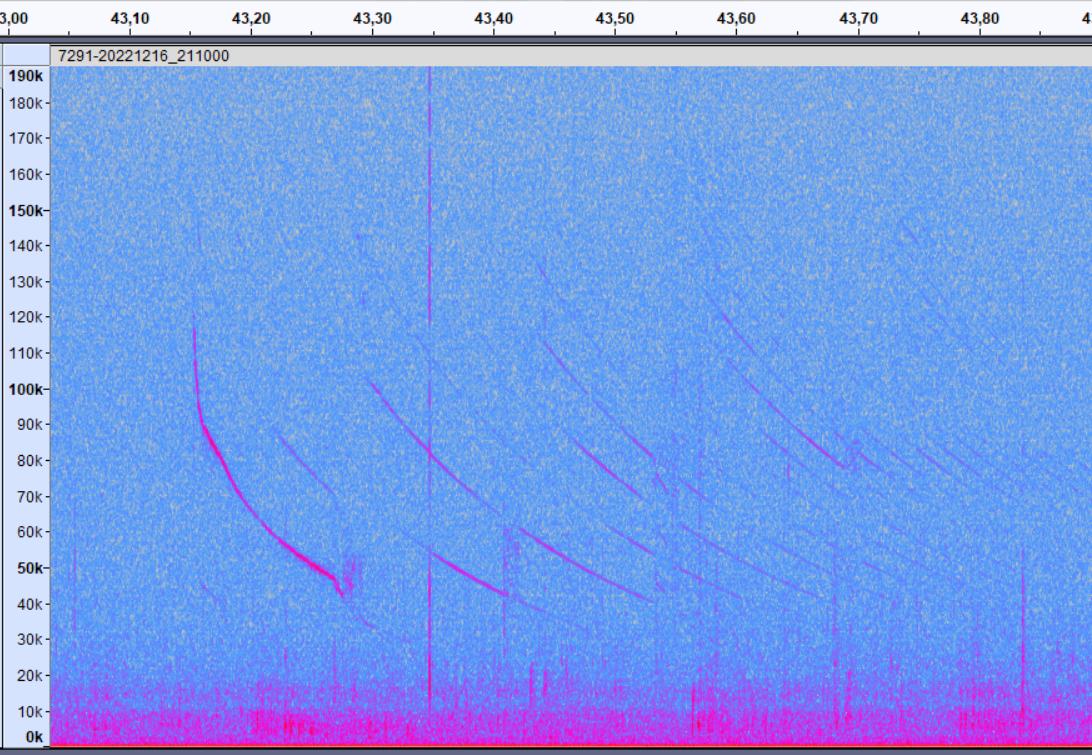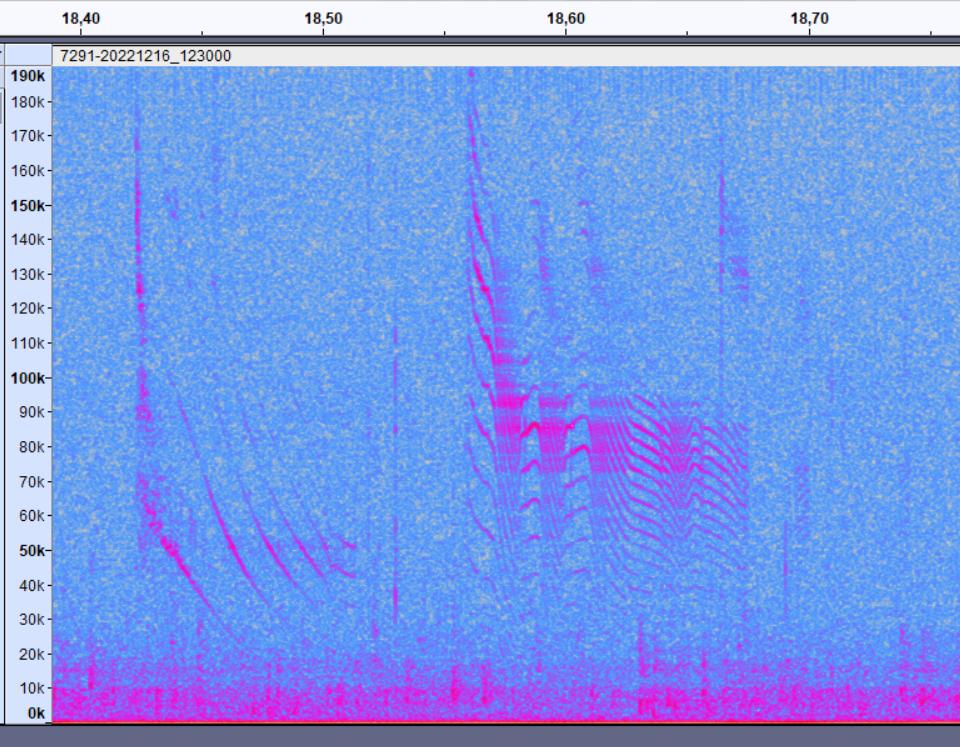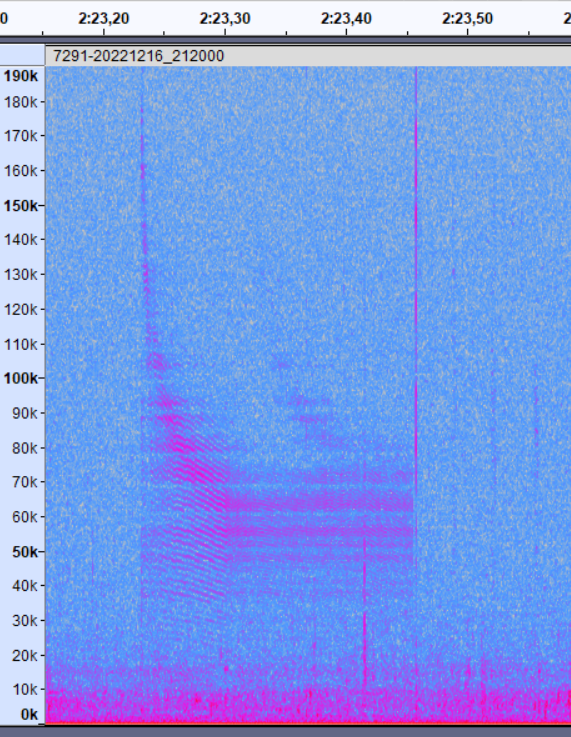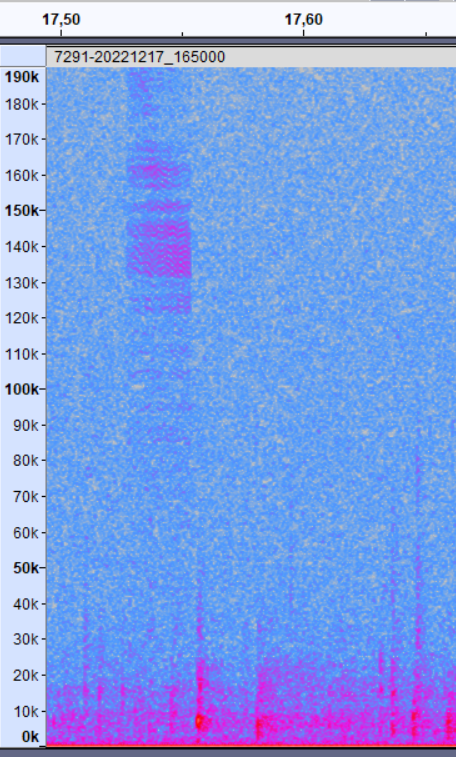In the North of France, we have several recordings full of very high-frequency dolphin-type sounds (like clicks, whistles, calls?, burst pulses. etc...) with almost all frequencies above 40kHz up to 150kHz and the whistles/moan/call types are very short in time. We have consecutive days full of these sounds in December, January, and February, and then the occurrence is decreasing. For now, these patterns happened in at least 2 recording stations; one at 7 km from the shore, the other one at 35km offshore. Days and night.
I'm showing you several spectrogram types. Any idea what it could be?



